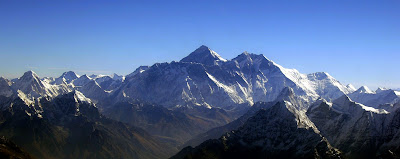
Dates when provinces and territories joined Confederation
Now 10 Provinces and 3 Territories constitute Canada.

Dates when provinces and territories joined Confederation
 A person with Color Blindness can not distinguish certain colors.
A person with Color Blindness can not distinguish certain colors.
 I had a winter camp recently. It was really a new experience for me to play in snow. Now I know we can do a lot of activities such as sliding, skiing, snowshoeing, etc in the winter season despite the chilling weather. Snow Shoeing is one of the activities that I liked during the camp. It is a fun activity and it does not require any equipment but the snowshoes. Snowshoeing is just like a walk, but on the thick snow. We can walk as normal when using snowshoes. The snowshoes are the flat sheets which are wider and longer than the regular shoes, and are fitted beneath your shoes with straps. You can walk uphill, downhill or straight without stocking on the thick snow.
I had a winter camp recently. It was really a new experience for me to play in snow. Now I know we can do a lot of activities such as sliding, skiing, snowshoeing, etc in the winter season despite the chilling weather. Snow Shoeing is one of the activities that I liked during the camp. It is a fun activity and it does not require any equipment but the snowshoes. Snowshoeing is just like a walk, but on the thick snow. We can walk as normal when using snowshoes. The snowshoes are the flat sheets which are wider and longer than the regular shoes, and are fitted beneath your shoes with straps. You can walk uphill, downhill or straight without stocking on the thick snow.
Many people have set

This is the place I always miss and I always remember.This is the city where I grew up.Pokhara is the most beautiful city of 
I used to go to

For healthy lifestyle, balanced diet is very important. The amount of diet we need depends on our lifestyle. Individuals of different ages and stages have different needs. For example growing children require more calories; women of childbearing age require extra folic acid; pregnant women need extra iron. Persons over 50’s require vitamin D supplement.
Food guide is very important for better overall health, low disease risk, a healthy body weight, feeling and looking better, getting more energetic, stronger muscles and bones. We can follow the Canadian food guide to eat balanced diet.
Source: http://www.hc-sc.gc.ca/fn-an/food-guide-aliment/tour/food_guide_en.swf
